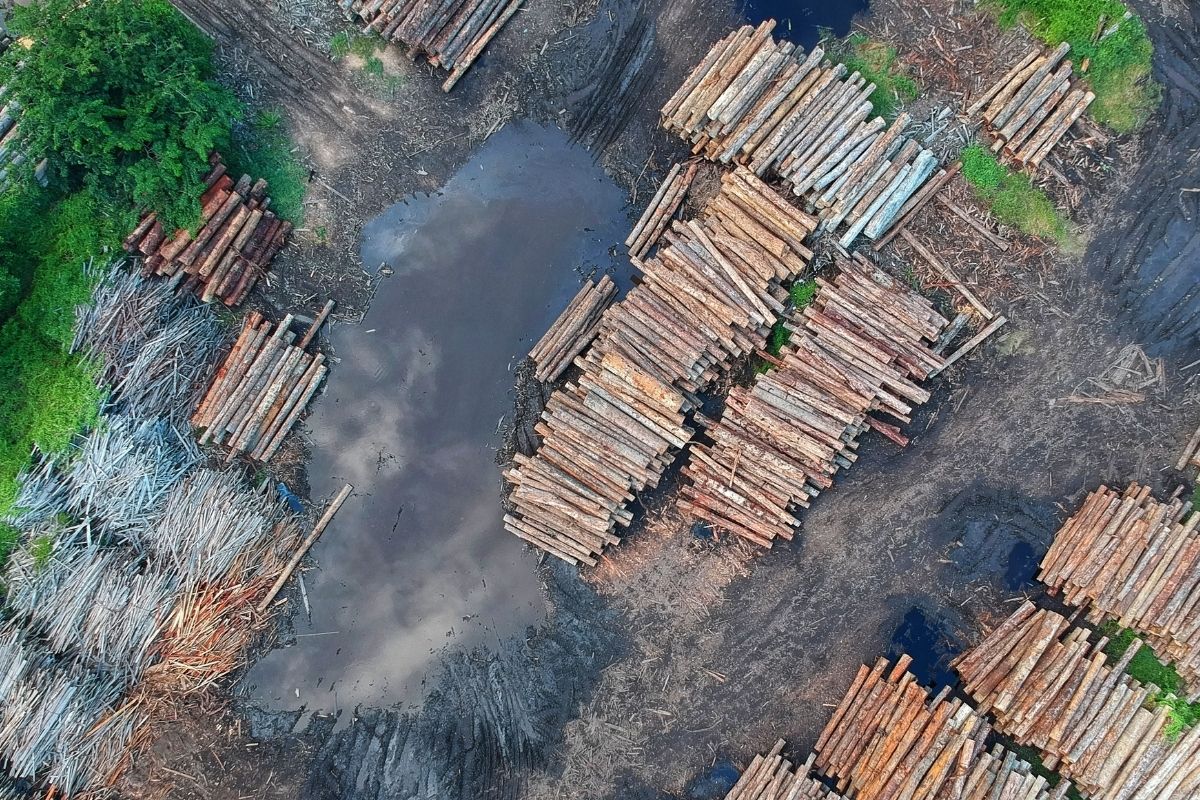

From space – with a little help from artificial intelligence – what often remains hidden from the Earth’s surface becomes painfully visible.
Modern slavery is a major and global problem; there are still countless people who are forced to work under bad conditions. For example in the Amazon forest. It is well known that ‘modern slaves’ are used there for both legal and illegal logging. Unfortunately, attempts to tackle this exploitation of people often fail. This is mainly due to the fact that the small businesses for which these modern slaves work are only active in one place for a short time – once the trees have been cut down, they move on – and what also does not help is that the places where they are active are usually are quite remote. By the time trouble-smelling labor inspectors arrive, the areas where the alleged exploitation took place have often already been abandoned.
Satellite images
It is to get discouraged. But there is hope. Because scientists from Stanford University are now showing that modern slavery – which has proved so elusive from the Earth’s surface – can be combated a lot better with a little help from space. “Forced labor is difficult to detect,” said researcher Victoria Ward. “But satellite images can really help identify what is happening in a timely manner and thus allow inspectors to intervene more effectively.”
ovens
In their research, Ward and colleagues are targeting an indicator of active deforestation – often clearly visible from space: large numbers of tent-shaped ovens. These ovens are usually about three meters wide and are used to burn felled trees and turn them into charcoal. These ovens are often set up in long rows (see also the image below) and are unfortunately often accompanied by labor camps in which people are forced to do their part to deforestation of the surrounding area.

This satellite image shows rows of ovens and roads. It indicates that there is active deforestation here and often forced laborers are involved. Image: Via Stanford University.
Due to their size and the fact that they are often used in large numbers, these ovens can even be seen clearly on satellite images. But it does require that you study those satellite images closely. And, given the very temporary nature of the work, you have to do this repeatedly. That is quite labor intensive. Especially given the enormous size of the Amazon rainforest. That is almost impossible for people. But Ward and colleagues have come up with something for that; they have developed an artificially intelligent algorithm that – after some training – is able to track down the ovens and associated labor camps on their own.
Approach
The researchers first collected reports from the Brazilian Labor Inspectorate that cover hundreds of places in the Amazon forest where trees were burned in the tent-shaped ovens. For 200 of those locations, the researchers also looked up satellite images taken at the time of the inspection. They then labeled on those images all the features that distinguished these areas from areas where no trees were cut and burned. That information was then used to teach an algorithm to recognize these areas where forced labor-associated deforestation was taking place.
It functions
Once the algorithm had been sufficiently trained, it was unleashed on recently acquired satellite images. And with result; The algorithm turned out to be able to immediately identify new areas on these new images where kilns are currently used to burn trees. “The algorithm is cheap and satellites are flying over this area all the time,” said study researcher Michael Baiocchi. “The algorithms can therefore continuously monitor the area.”
Ultimately, the researchers hope to develop a system based on the satellite images and the algorithm that automatically alerts the Brazilian labor inspectorate if suspicious activity is detected in the Amazon forest. At the same time, however, they are also aware that the current algorithm does not solve all problems in one fell swoop. “We’re pretty sure the people behind this human trafficking will adapt to our approach,” said Baiocchi. “We must therefore continue to look for new patterns that the police are not yet aware of.” And again, algorithms can help. “There are very sophisticated algorithms that can be designed to look for new, previously unknown patterns that us humans haven’t noticed. One of our goals is to use these new algorithms to find other ways in which human trafficking can be disrupted.”
The ultimate main goal is clear: to rescue people from the clutches of their ruthless employers. But exposing abuses, with a little help from space, serves another purpose, Ward says. “The idea is to create transparency so people can’t say they don’t know what’s going on.”
Source material:
†Detecting Modern-Day Slavery From the Sky” – Stanford University
Image at the top of this article: Photo by Pok Rie via Pexels